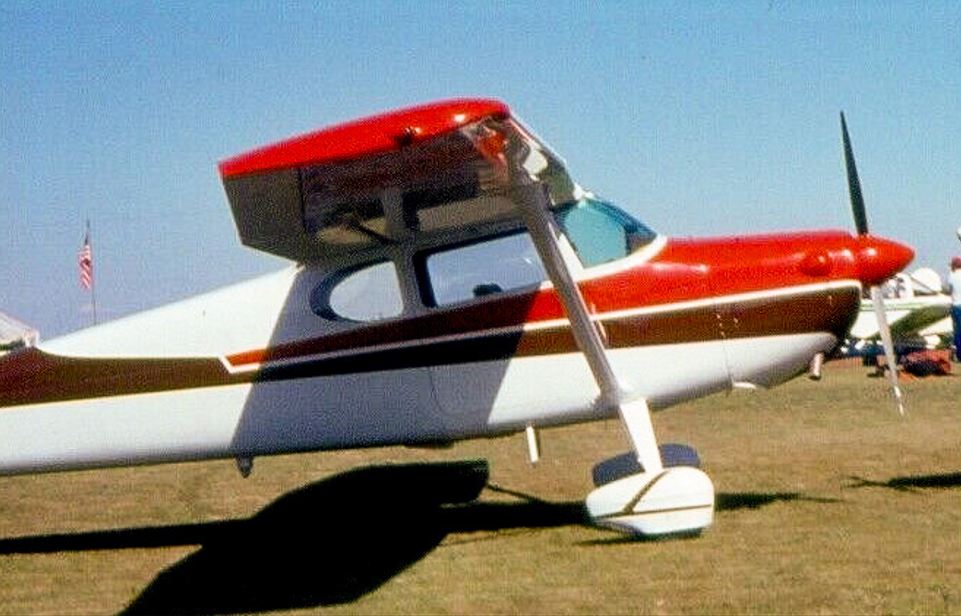When it comes to aircraft, the term “ownership” is something of a misnomer. While we indeed own our airplanes, the natural lifespan of a GA aircraft can extend well beyond our own. We are, therefore, caretakers or stewards, tending to the care and maintenance of our beloved machines so that the next person in line can enjoy them to the fullest.
With a lengthy lifespan comes a colorful history. And while we are able to peruse our aircraft logbooks for clues or even easily access decades of ownership and registration records from the FAA, gaps abound. So we’re often left without much background or context regarding their past lives. The grand adventures, close calls, and colorful circumstances through which our airplanes endured typically elude us as we daydream about their past lives.

I considered myself fortunate when, from out of the blue, an individual from my airplane’s past contacted me via email. Her name was Phyllis, and when browsing this column, she recognized my Cessna 170 as the airplane she and her husband, Al, used to own between 1970 and 1981. She explained that although Al had passed away in 2017, she still kept in touch with Dick, the gentleman to whom they had sold to and from whom I had purchased the airplane.
It was a pleasure to make contact with Phyllis. I learned a few things about the 170 and told her the whole story about meeting Dick and buying it from him. Recognizing it was a long shot, I asked her if she happened to have any old photos from the days she owned it. She said she did, and a couple of weeks later, I received some color photocopies of my airplane, wearing a different tail number and frolicking among the beaches of the Pacific Northwest.

As someone with a soft spot for bygone eras and forgotten times, I was immensely grateful to receive these glimpses into my airplane’s history. I shared them with Dick, as well. He was able to provide some additional context to the photos, explaining what beach was likely visible in one of the photos and pointing out how Al chose the former tail number (N170AL) to display his initials.
Last month, I had the unexpected opportunity to give my friend Jim a glimpse into his own airplane’s history. While aimlessly scrolling through eBay listings for old airplane slides and scanning for any particularly interesting slices of aviation history, I spotted a Cessna 170 with a paint scheme that looked familiar. The listing was for a set of 10 old slides taken at an unnamed fly-in sometime in the early 1980s, and the 170 pictured appeared to have the exact same paint scheme as Jim’s 170.
- READ MORE: Going to the Birds, And How Not To
This was quite the coincidence. Jim’s airplane had been repainted in its original factory paint scheme but with nonstandard colors. In place of the standard primary reds, yellows, or blues, his plane sports a color palette nearly identical to that of the A&W burger chain, a tasteful pairing of orange and brown. The likelihood that these slides showed a doppelganger was miniscule…but I had to be sure.
Of course, the tail number was inconveniently cut off in every photo, making a positive identification impossible. But a closer look and some methodical detective work eventually resulted in certainty beyond a reasonable doubt. The airplane in the slides sported the exact same Horton STOL kit and the same engine modification, but the deciding factor was the presence of a unique decal on one wingtip but not on the other. It had to be Jim’s plane.

I went ahead and spent the $12 for the set of slides. When they arrived, I had them professionally scanned and printed, and I placed the two best shots in a small frame for Jim to hang on the wall of his hangar. Sure, they were relatively unremarkable photos in the grand scheme of things, but they captured a scene showing his airplane in a time well before he bought it. Best of all, it showed his airplane wearing a set of wheel pants. Having only ever known his airplane with a big set of Alaskan Bushwheel tundra tires, it was both amusing and comical to see.
- READ MORE: When It’s Better to Have It and Not Need It
Since making this aviation-related archeological discovery, I now keep an eagle eye out for any old photos or articles featuring any of my friends’ airplanes. I even went so far as to enter a handful of their tail numbers as “saved searches” in eBay so that I’ll be alerted if and when any items, such as photos, slides, or logbooks, are listed for sale with those tail numbers in the descriptions.
In this way, I hope to once again pair forgotten memories with the present day, filling in vacant gaps in history with context that would otherwise be lost forever. I think anyone who considers themselves to be caretakers of aviation history, rather than just owners, would greatly appreciate the effort.
